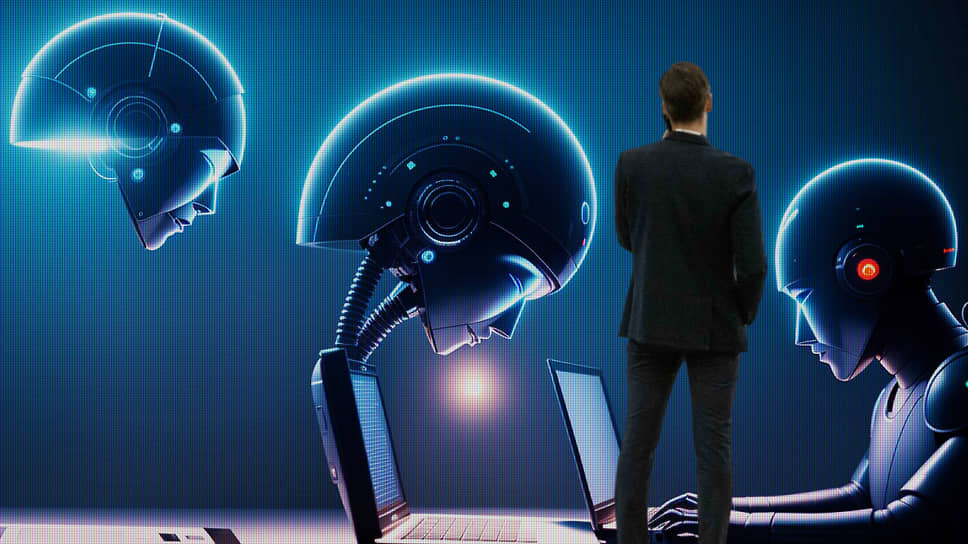The impact of AI on the labor market
[ad_1]
The surge in popularity of ChatGPT and other types of generative AI has again raised the question of the extent to which such technologies will impact the labor market. If it really turns out to be much larger than previously thought, then thanks to new technologies, in the short term, more jobs will be lost than new ones will be created.
Dangerous AI again
This week, the $1.4 trillion Norwegian Sovereign Fund urged companies to take seriously the risks and threats associated with the widespread use of AI. Among other things, the foundation stated the need to create systems that “correspond to the values and intentions of people”, as well as to pay attention to the possible “long-term impact on jobs and on human capital management”. Thus, the world’s largest sovereign wealth fund has entered into a newly growing discussion about the potential benefits and harms of the spread of AI, joining rather pessimistic experts.
At one time, there were widespread fears that artificial intelligence would put people out of work. However, subsequently the notion that AI create more jobs than it cuts, and people can study less routine and more creative tasks. Now there is a growing body of research showing that the impact of AI on the labor market may not be so unambiguously positive. Of particular concern is generative AI, which has skyrocketed in popularity over the past year since the advent of ChatGPT.
So, in March, the American bank Goldman Sachs published report predicting that generative AI could automate about 300 million jobs. “The emergence of generative AI raises the question of whether we are on the cusp of rapidly accelerating task automation, leading to lower labor costs and increased productivity,” wrote Goldman Sachs analysts. They note the ability of such AI to “create content indistinguishable from human creation and break down communication barriers between humans and machines.”
According to the forecasts of the consulting company McKinsey, up to 30% of all working time in the United States may soon be automated, including through generative AI.
According to company analysts, due to this, by 2030, about 12 million Americans will change their employment. And between 2030 and 2060, half of today’s tasks will be automated.
By counting McKinsey, such changes will bring the global economy from $17 trillion to $26 trillion. However, they can become what the famous economist Joseph Schumpeter called creative destruction: powerful technological and industrial changes will create new opportunities for development, but at the same time destroy the old structures and sectors of the economy.
The fact that the use of AI requires great care has long been argued by many experts. In March, the public organization Future of Life published an open letter calling for a “pause of at least six months” in the implementation of new advanced AI systems of this kind. The letter was signed by Apple co-founder Steve Wozniak and Tesla founder Elon Musk, among others. The letter says, in part: “Modern AI systems are able to compete with humans in solving some problems, and we should ask ourselves such questions … Should we automate all jobs?”
white collar robots
By forecasts World Economic Forum (WEF), AI will cut 83 million jobs over the next five years. And it will create 69 million new ones – that is, 14 million less than it will destroy.
Under the influence of generative AI, the types of work will also change: WEF analysts believe that 44% of key skills will change in these five years. If earlier technological changes had the greatest impact on workers with simple tasks and low skills, now areas that require fairly high skills and education will be affected.
This is alarming now: the need to compete with AI in writing and acting has become one of the reasons for the large-scale strikes employees of Hollywood film studios. Screenwriters demanded prohibit the use of artificial intelligence as the author of scripts.
The actors, among other things, were outraged by the proposal of the producers to attract extras for shooting only for one day, to scan their appearance and then use their digital images, as a result of paying for the work only once.
The Business Insider edition, based on the opinions of experts, amounted to list professions that can be largely automated with the spread of generative AI. Among other things, it included programmers, data analysts, advertisers, journalists and other content creators, teachers, financial analysts and consultants, traders, graphic designers, accountants.
“I don’t think we will face mass unemployment. But I think we’re going to see massive disruption as wages drop for many, wages in other jobs go up, and there’s a shift in demand for different kinds of skills. There will be a reallocation of work and a change in the balance of winners and losers,” said Eric Brynjelfsson, an economist and head of the Digital Economy Laboratory at Stanford University.
Training and support
In many cases, this is not about AI completely replacing humans, but rather about the possibilities to make work faster and more productive. For example, researchers at the Massachusetts Institute of Technology came to the conclusionthat the application of generative AI can speed up the work of programmers writing code by 56%. Another study shows that using ChatGPT as a kind of assistant makes writing some professional texts 40% faster and 18% better.
Goldman Sachs predicts that during the first ten years after the widespread adoption of AI, labor productivity will grow by 1.5% per year, which is comparable to the growth rate of labor productivity after the introduction of an electric motor or a PC. Some experts, including Erik Brynjelfsson, believe that this will contribute to the active creation of new jobs – after all, GDP and company incomes will grow, companies will expand their activities, and demand will also grow.
The emergence of new professions and a change in the areas of employment by people will require their retraining and support for the dismissed. One option is support programs from governments of different countries.
A similar approach is already being practiced by the Danish authorities, this is the so-called flexicurity system (from flexibility – flexibility, and security – security). It strikes a balance between labor market flexibility and job security for workers. The system makes it relatively easy for employers to lay off employees if market changes warrant it. At the same time, laid-off employees are paid a substantial allowance in the amount of $2.9 thousand per month for two years. At the same time, they are provided with opportunities to work with career consultants, attend retraining courses, and so on.
As the head of the American research center Jobs for the Future, Maria Flynn, notes, in the 1970s there was a similar program in the United States – for people whose jobs disappeared due to the transfer of part of production to developing countries. “It was a social safety net in which every worker who qualified for certain conditions – his job was moved (to other countries.— “b”) for economic reasons—was eligible for cash benefits and retraining assistance,” says Ms. Flynn.
[ad_2]
Source link











